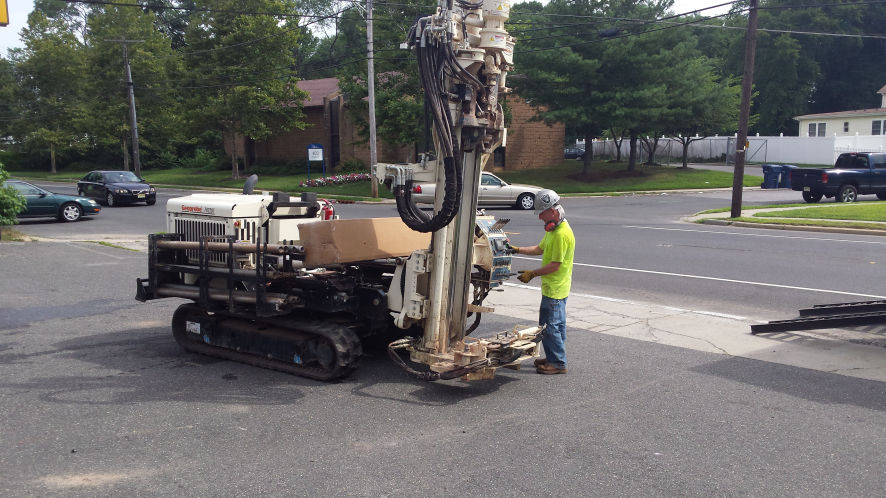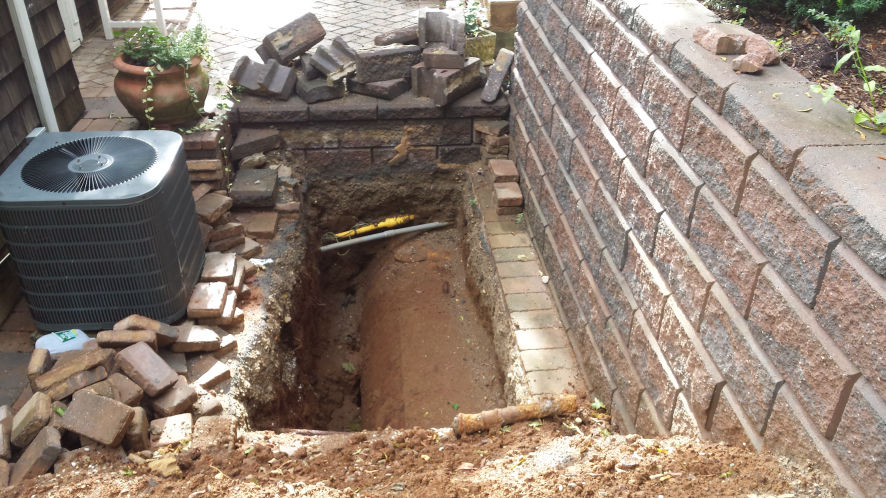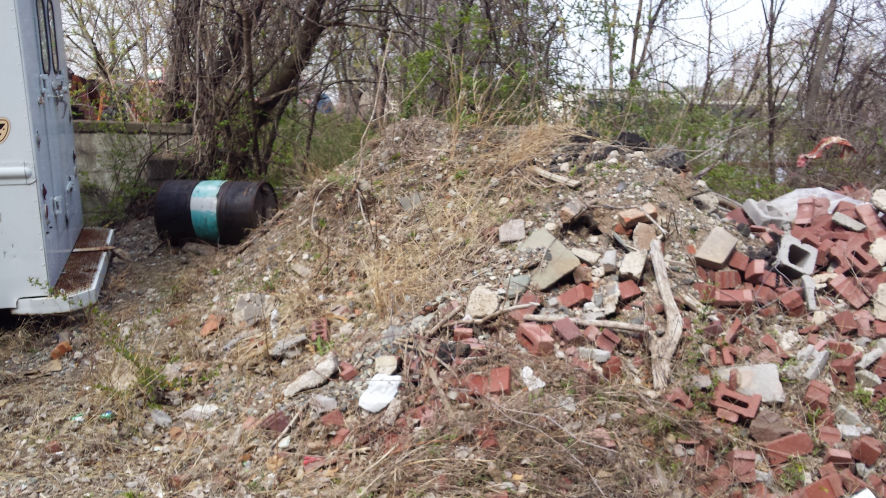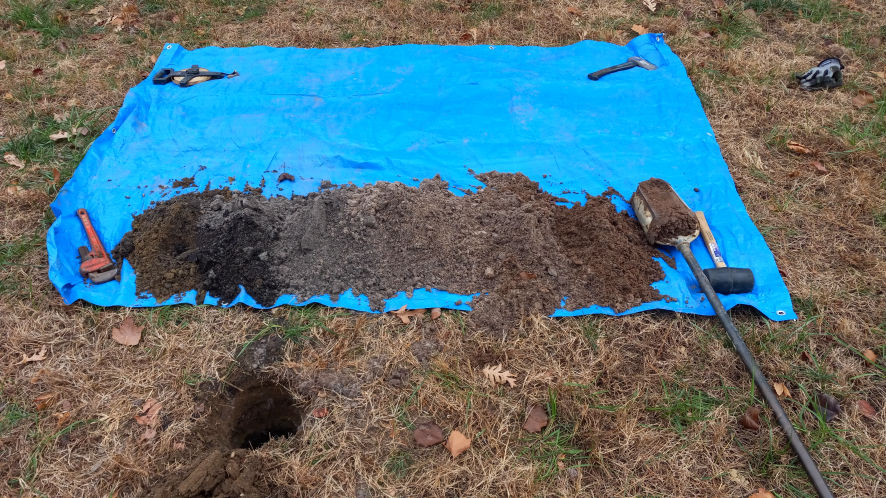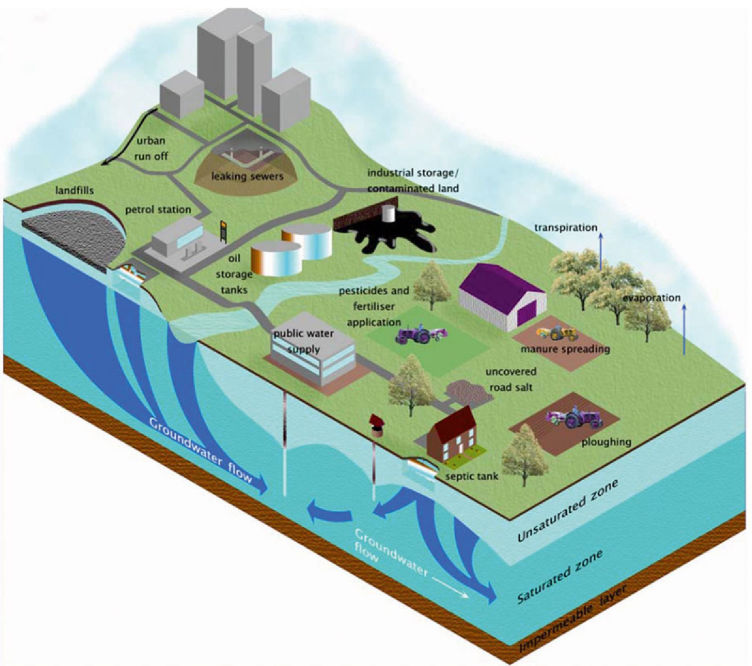

What Does a Phase 1 ESA Include?
A Phase 1 Environmental Site Assessment (ESA) is a comprehensive study conducted to evaluate the environmental conditions of a property, typically before a real estate transaction or development project takes place. The purpose of a Phase 1 ESA is to identify potential environmental liabilities associated with the property. Here is an overview of what a Phase 1 ESA typically includes:
Historical Research: This involves reviewing historical records, maps, aerial photographs, and other documents to determine the past uses of the property and nearby areas. The goal is to identify any potential sources of contamination or hazardous materials.
Site Inspection: A site visit is conducted to visually inspect the property and its surroundings. The environmental consultant will assess the current condition of the site, look for signs of contamination, and note any potential environmental hazards.
Interviews: The consultant may conduct interviews with current and past property owners, tenants, and neighbors to gather information about the property's history and any known environmental issues.
Government Records Review: This involves researching government records, such as permits, environmental violation notices, and regulatory agency databases to identify any regulatory or compliance issues related to the property.
Geological and Hydrogeological Evaluation: The assessment may include a review of the geological and hydrogeological characteristics of the property to assess the potential for contamination to migrate through the soil or groundwater.
Regulatory Compliance Assessment: The consultant will evaluate the property's compliance with federal, state, and local environmental regulations. This includes assessing whether the property is located in environmentally sensitive areas or within designated flood zones.
Hazardous Materials Inventory: A review of the property's current and past uses to identify any potentially hazardous materials or substances that may have been used or stored on the site.
Asbestos and Lead-Based Paint Assessment: If applicable, an assessment of the presence of asbestos-containing materials and lead-based paint in buildings on the property.
Radon Assessment: In some cases, a Phase 1 ESA may include a radon assessment, especially in areas with known radon issues.
Mold and Indoor Air Quality Assessment: If there are concerns about indoor air quality or mold, these issues may be assessed during the Phase 1 ESA.
Report Preparation: The findings of the Phase 1 ESA are compiled into a detailed report. This report will typically include a summary of the historical research, site inspection findings, interviews, regulatory compliance assessment, and recommendations for further action if necessary.
Conclusion and Recommendations: The Phase 1 ESA report will conclude with recommendations, which may include additional environmental testing (Phase 2 ESA) if potential contamination is identified. If no significant issues are found, the report may recommend proceeding with the real estate transaction or development project.
It's important to note that a Phase 1 ESA is typically not intended to provide a definitive assessment of environmental conditions but rather to identify potential environmental concerns that may require further investigation. If significant issues are identified, a Phase 2 ESA involving sampling and laboratory analysis may be recommended to assess the extent and nature of contamination. Link For: American Standard Testing & Measurement - The American Standard for Phase 1 Environmental Site Assessments.
What is the Typical Cost of a Phase 1?
The cost of a Phase 1 Environmental Site Assessment (ESA) can vary widely depending on several factors, including the location, size, complexity of the site, and the specific requirements of the assessment. On average, as of my last knowledge update in September 2021, the cost of a Phase 1 ESA can range from $1,500 to $5,000 or more. However, it's essential to keep in mind that these are approximate figures, and costs can differ significantly based on the following factors:
Location: The cost of a Phase 1 ESA may be higher in areas with a higher cost of living or where environmental consulting services are in high demand.
Size and Complexity: Larger or more complex sites may require more time and resources to assess, which can increase the cost. Sites with a history of industrial or hazardous activities may also be more expensive to evaluate.
Data Availability: The cost may vary depending on the availability of historical information and the extent of research required. Sites with readily available data may be less expensive to assess.
Regulatory Requirements: Some industries or locations may have additional regulatory requirements, which can add to the cost of the assessment.
Consultant Experience: The expertise and reputation of the environmental consulting firm you choose can influence the cost. More experienced firms may charge higher fees.
Site Accessibility: The ease of access to the site can affect the cost. Sites that are difficult to reach or require special equipment may incur additional expenses.
Additional Services: If the Phase 1 ESA identifies potential environmental risks that require further investigation (e.g., a Phase 2 ESA), those additional services will come with their own costs.
To get an accurate cost estimate for a Phase 1 ESA for your specific project, it's advisable to contact several environmental consulting firms and request quotes. They will typically consider the site-specific details and your project's requirements to provide you with a customized cost estimate.
Keep in mind that while cost is a factor, the quality and thoroughness of the assessment are crucial to making informed decisions about a property's environmental risks, especially if you are considering a real estate transaction or development project. Link For: Commercial/Multifamily Research
Why do I Need a Phase 1 ESA?
A Phase 1 Environmental Site Assessment (ESA) is essential for several reasons, especially when dealing with property transactions or development projects. Here are some key reasons why you might need a Phase 1 ESA:
Identify Environmental Risks: A Phase 1 ESA is conducted to identify potential environmental risks associated with a property. It helps uncover historical and current uses of the property and nearby areas that could have led to contamination or other environmental issues.
Due Diligence: If you are purchasing or investing in real estate, a Phase 1 ESA is a crucial component of due diligence. It allows you to assess the environmental liabilities and risks associated with the property before making a financial commitment. This can help you avoid unexpected costs and legal liabilities.
Compliance with Regulations: In many jurisdictions, conducting a Phase 1 ESA is required by law or regulation, especially for certain types of properties, such as those involved in commercial or industrial activities. Compliance can help you avoid legal penalties and liability for cleanup costs.
Liability Protection: Under some environmental laws, such as the Comprehensive Environmental Response, Compensation, and Liability Act (CERCLA), innocent landowners may be protected from liability for cleaning up contamination if they can demonstrate that they conducted a Phase 1 ESA and took appropriate action based on the findings.
Securing Financing: Lenders often require a Phase 1 ESA as part of their underwriting process when providing loans for property transactions. It helps lenders assess the risks associated with the property and the borrower's ability to repay the loan.
Environmental Insurance: If you plan to purchase environmental insurance coverage for a property, insurers may require a Phase 1 ESA as part of their risk assessment process.
Informed Decision-Making: A Phase 1 ESA provides valuable information that enables informed decision-making. It allows you to understand the potential environmental issues and associated costs, which can influence negotiations, pricing, and the feasibility of your project.
Environmental Stewardship: For environmentally conscious organizations or individuals, a Phase 1 ESA can be a proactive step in ensuring that a property's environmental impact is assessed and mitigated as necessary.
Resale Value: If you plan to sell the property in the future, having a recent Phase 1 ESA can enhance the property's marketability and potentially increase its resale value by providing assurance to prospective buyers.
Overall, a Phase 1 ESA is a valuable tool for assessing and managing environmental risks associated with real estate transactions and development projects, protecting your interests, and ensuring compliance with environmental regulations. It is typically a wise investment to make when dealing with properties of unknown or complex environmental histories. Link For: Commercial/Multifamily Real Estate Finance Database
What is the Difference Between a Phase 1 & a Phase 2?
A Phase 1 Environmental Site Assessment (ESA) and a Phase 2 ESA are two distinct stages in the environmental assessment process, each serving a different purpose:
Phase 1 Environmental Site Assessment:
Purpose: A Phase 1 ESA is primarily a preliminary investigation designed to identify potential environmental concerns associated with a property. It aims to assess historical land use, records, and visual inspections to determine if there are any apparent indications of contamination or environmental risks.
Scope: A Phase 1 ESA focuses on research, interviews, and a site visit. It relies on historical records, interviews, and visual observations to assess potential environmental issues.
Findings: The Phase 1 report typically concludes with recommendations. If no significant environmental concerns are identified, it may recommend no further action. However, if potential issues are noted, it may recommend a Phase 2 ESA for further investigation.
Cost: Phase 1 ESAs are generally less expensive than Phase 2 ESAs.
Phase 2 Environmental Site Assessment:
Purpose: A Phase 2 ESA is a follow-up to a Phase 1 ESA and is conducted when potential environmental issues have been identified or suspected. It aims to confirm the presence, extent, and nature of contamination or environmental hazards.
Scope: A Phase 2 ESA involves collecting samples of soil, water, or air and analyzing them for specific contaminants. It often includes drilling or excavation to access subsurface conditions and may use geophysical surveys or other investigative techniques.
Findings: The Phase 2 report provides detailed information about the contaminants found, their concentrations, and distribution. It helps determine the severity of the environmental issue and provides data for remediation planning.
Cost: Phase 2 ESAs are typically more expensive than Phase 1 ESAs due to the sampling and laboratory analysis involved.
In summary, the key differences between a Phase 1 and a Phase 2 ESA are their purpose and scope. A Phase 1 ESA is an initial assessment aimed at identifying potential environmental concerns and recommending further action if needed. On the other hand, a Phase 2 ESA is a more in-depth investigation that involves sampling and testing to confirm the presence and extent of contamination. The decision to proceed from a Phase 1 to a Phase 2 ESA is based on the findings of the Phase 1 assessment. Phase 2 is typically conducted when there is a reasonable suspicion of contamination that needs verification and detailed assessment. Link For: Commercial Real Estate Basics
How do I do A Phase 1 ESA?
A Phase 1 Environmental Site Assessment (ESA) is a complex and specialized process typically conducted by environmental professionals or consultants. Here is an overview of the steps involved in conducting a Phase 1 ESA:
Engage a Qualified Environmental Consultant:
The first step is to hire a qualified environmental consultant or firm with expertise in conducting Phase 1 ESAs. Ensure they have the necessary certifications and experience.
Site Information and Historical Research:
Provide the consultant with all available information about the property's history and current use.
The consultant will conduct extensive historical research, which may involve reviewing:Aerial photographs
Historical maps
Building permits
Land use records
Environmental databases
City directories
Interviews with past property owners, occupants, or neighbors
Site Visit and Visual Inspection:
The consultant will conduct a site visit to visually inspect the property and its surroundings. During this visit, they will look for any evidence of potential environmental concerns, such as:
Chemical storage
Hazardous materials
Signs of contamination
Underground storage tanks
Drainage patterns
Soil conditions
Regulatory Review:
The consultant will review federal, state, and local regulatory databases to identify any known or potential environmental issues in the vicinity of the property.
Report Preparation:
Based on the collected information, the consultant will prepare a comprehensive Phase 1 ESA report.
The report should include:
Site history and ownership
Summary of findings from the site visit
Results of historical research
Regulatory review
Interviews conducted
Recommendations for further action, if necessary
Recommendations:
Depending on the findings, the Phase 1 ESA report may recommend further investigation, such as a Phase 2 ESA, if potential environmental risks are identified. It may also provide recommendations for mitigation or remediation of identified issues.
Client Review and Decision-Making:
The client (property owner, buyer, lender, etc.) reviews the Phase 1 ESA report and considers the recommendations.
Depending on the findings, the client may decide to proceed with the property transaction, request further investigations, negotiate with the seller, or take other appropriate actions.
Follow-Up Actions:
If environmental risks are identified, and further investigation or remediation is recommended, the client can engage the consultant or other experts to conduct Phase 2 ESAs, remediation, or other necessary actions. It's crucial to remember that conducting a Phase 1 ESA is a specialized task that should be carried out by experienced environmental consultants. The process requires a thorough understanding of environmental regulations, research techniques, and site assessment methods. Hiring a qualified consultant ensures that the assessment is conducted professionally and accurately. Additionally, the findings from a Phase 1 ESA are time-sensitive and may expire, so it's essential to plan and execute the assessment according to the required timeline.
What is an Example of a Property Where a Phase 1 is Necessary?
A Phase 1 Environmental Site Assessment (ESA) is typically required for properties where there is potential for environmental contamination or where environmental risks may exist. Here are some examples of properties where a Phase 1 ESA would be required or strongly recommended:
Commercial Real Estate Transactions: Before purchasing, financing, or leasing commercial properties such as office buildings, retail centers, or industrial facilities, a Phase 1 ESA is often required by lenders, investors, or regulatory agencies to assess environmental liabilities.
Industrial Sites: Properties with a history of industrial activities, chemical manufacturing, or hazardous material storage are prime candidates for Phase 1 ESAs to determine the extent of contamination or potential risks.
Gas Stations: Gasoline and fuel stations, due to their history of underground storage tanks, are commonly subjected to Phase 1 ESAs to assess the potential for soil and groundwater contamination.
Brownfield Redevelopment: Properties identified as brownfields, which are vacant or underutilized sites with known or suspected contamination, require Phase 1 and Phase 2 ESAs to assess contamination levels and plan for cleanup and redevelopment.
Vacant Land: Even undeveloped or vacant land can require Phase 1 ESAs if it is in proximity to known sources of contamination or if there is uncertainty regarding past land use.
Former Agricultural Land: Agricultural properties may require Phase 1 ESAs if there's potential for pesticide or chemical contamination from historical farming practices.
Hospitals and Healthcare Facilities: Healthcare facilities, due to their use of chemicals and hazardous materials, often undergo Phase 1 ESAs to identify any environmental risks associated with the property.
Government Properties: Public agencies and government entities often require Phase 1 ESAs for properties they own or plan to acquire, ensuring compliance with environmental regulations and minimizing potential liability.
Landfills and Waste Disposal Sites: Properties near or adjacent to landfills, waste disposal sites, or hazardous waste facilities are likely to undergo Phase 1 ESAs to assess the impact of waste migration or contamination.
Residential Developments: In some cases, residential property developers may choose to conduct Phase 1 ESAs to assure prospective homebuyers of the safety and environmental quality of the land.
Transportation Corridors: Properties located near transportation corridors, such as railways, highways, or airports, may require Phase 1 ESAs due to the potential for spills or leaks of hazardous materials.
Historical or Abandoned Sites: Sites with a history of unknown or unrecorded uses, abandoned structures, or historical significance may undergo Phase 1 ESAs to uncover any hidden environmental risks.
It's important to note that the need for a Phase 1 ESA can vary based on local regulations, lender requirements, and the specific circumstances of each property transaction or development project. Conducting a Phase 1 ESA is often considered a prudent and responsible step to assess and manage environmental risks associated with a property, especially when there is uncertainty regarding its history or potential contamination.
Link For: Recent Commercial/Multifamily News
When Should a Phase 1 ESA be Done?
A Phase 1 Environmental Site Assessment (ESA) should typically be done in the following situations:
Prior to Property Purchase: If you are considering purchasing real estate, especially commercial or industrial properties, it's advisable to conduct a Phase 1 ESA as part of your due diligence process. This assessment helps you identify potential environmental risks associated with the property before you commit to the transaction.
Before Property Financing: Lenders often require a Phase 1 ESA before approving a loan for a property transaction. This is to assess the environmental risks and potential liabilities associated with the property, which can affect the lender's decision.
During Property Development: If you plan to develop or redevelop a property, conducting a Phase 1 ESA at the early stages of the project can help you understand any environmental challenges that may need to be addressed during the development process.
Prior to Lease Agreements: Commercial tenants may consider a Phase 1 ESA before entering into a lease agreement, especially if they plan to use the property for activities that could involve hazardous materials or have environmental implications.
As Part of Regulatory Compliance: Some industries, such as those involved in manufacturing, storage, or handling of hazardous materials, may be required by regulatory agencies to conduct periodic Phase 1 ESAs to ensure compliance with environmental regulations.
When Property History is Uncertain: When there is uncertainty about the property's historical uses, past contamination, or proximity to potentially contaminating activities, it's a good practice to conduct a Phase 1 ESA to assess potential environmental risks.
To Secure Environmental Insurance: If you plan to obtain environmental insurance coverage for a property, insurers may require a Phase 1 ESA as part of their risk assessment process.
For Government or Public Projects: Public agencies and government entities often require Phase 1 ESAs for properties they own or plan to acquire to ensure compliance with environmental regulations and minimize potential liability.
It's essential to conduct the Phase 1 ESA early in the property transaction process, as the findings may influence your decision to proceed with the transaction, negotiate terms, or take remedial actions if environmental issues are identified. Additionally, the findings from a Phase 1 ESA are typically valid for a limited period (often one year), so timing is crucial to ensure the information remains current and relevant. Consulting with an experienced environmental consultant or professional is essential to determine the appropriate timing and scope of the assessment based on your specific needs and circumstances.
Link For: Commercial Real Estate Forecasts
What is Required for a Phase 1 Update?
A Phase 1 Environmental Site Assessment (ESA) update, often referred to as a "Phase 1 ESA Update" or "Phase 1 ESA Review," is a process in which a previously completed Phase 1 ESA is reevaluated or updated to ensure that the information it contains is still current and accurate. Here's what is typically required for a Phase 1 ESA update:
Review of Original Phase 1 ESA: The process begins with a thorough review of the original Phase 1 ESA report. The consultant or environmental professional conducting the update needs to understand the scope of the initial assessment and its findings.
Site Visit: A site visit to the property is often necessary to verify the conditions on the ground. This visit allows the consultant to check for any changes in land use, property conditions, or potential sources of contamination that may have occurred since the original assessment.
Interviews and Records: Interviews with current and past property owners, occupants, or neighbors may be conducted to gather additional information. Additionally, any new historical records or data that have become available since the original assessment should be reviewed.
Regulatory Database Updates: A review of federal, state, and local regulatory databases should be conducted to check for any new information regarding environmental concerns or changes in regulations that may impact the property.
Environmental Liabilities: The consultant should assess whether any environmental liabilities or enforcement actions have been imposed on the property since the original assessment. This may involve reviewing correspondence with regulatory agencies.
Adjacent Property Changes: Any changes or developments on adjacent properties that could potentially affect the subject property should be considered in the update.
Recommendations: Based on the updated information, the Phase 1 ESA update report should include recommendations for further action, if necessary. This may include a recommendation for a Phase 2 ESA if new concerns are identified.
Conclusion: The update report should conclude whether the information in the original Phase 1 ESA remains valid, if any new concerns have arisen, and whether any additional investigation or action is recommended.
Regulatory Compliance: Ensure that the Phase 1 ESA update is conducted in compliance with current environmental regulations and industry standards.
Client Requirements: Consider any specific requirements or concerns of the client, such as changes in property use or future development plans.
The need for a Phase 1 ESA update can arise for various reasons, including changes in property conditions, the expiration of the original report's validity, or new developments in the regulatory environment. Conducting an update helps ensure that the information used for decision-making remains accurate and up-to-date. It's essential to work with an experienced environmental consultant or firm to perform a thorough and compliant Phase 1 ESA update when necessary.
Link For: About MBA's Commercial/Multifamily Finance Convention & Expo
How Long is a Phase 1 Good for?
A Phase 1 Environmental Site Assessment (ESA) has a limited shelf life, and its validity depends on several factors, including industry standards, regulatory requirements, and the policies of lenders or other parties involved in a property transaction. As of my last knowledge update in September 2021, here are some general guidelines regarding the validity of a Phase 1 ESA:
Industry Standards: According to the industry standard known as ASTM E1527-13, a Phase 1 ESA is considered valid for one year from the date of completion. This means that if you plan to use the Phase 1 ESA for a property transaction, it should typically have been conducted within the past year.
Regulatory Requirements: Some state or local regulations may specify their own requirements for the validity of Phase 1 ESAs. These regulations may align with or differ from ASTM standards, so it's important to check with local authorities.
Lender and Investor Policies: Lenders and investors often have their own requirements for the validity of Phase 1 ESAs. Some may accept a Phase 1 ESA that is up to 180 days old, while others may require an update if the assessment is older than 180 days but less than one year.
Property Transactions: If you're involved in a property transaction, such as buying or refinancing a property, the parties involved (e.g., lenders, buyers, sellers) may specify their own requirements for the age of the Phase 1 ESA.
Environmental Conditions: Environmental conditions can change over time due to various factors, including changes in land use, nearby developments, or environmental incidents. If there have been significant changes in the environmental conditions of the property or its vicinity since the Phase 1 ESA was conducted, an update may be required to account for these changes.
Nature of the Property: Properties with known or suspected environmental issues, such as brownfields or properties with ongoing monitoring or remediation activities, may require more frequent Phase 1 ESA updates.
It's essential to consult with the parties involved in the property transaction, including lenders, regulatory agencies, and environmental consultants, to determine the specific requirements for the Phase 1 ESA's validity in your situation. In many cases, when the Phase 1 ESA exceeds its validity period, a Phase 1 ESA update or a new Phase 1 ESA may be required to provide current and reliable information for decision-making and regulatory compliance.
Link For: CHANGES IN COMMERCIAL/MULTIFAMILY MORTGAGE DEBT OUTSTANDING
Phase 1 Environmental Site Assessment
Phase I Environmental, or Phase I Environmental Site Assessment. In New Jersey provides the following:
1. It evaluates a commercial property for serious environmental conditions.
2. Greatly reduces a buyer’s chances of purchasing a property with serious environmental problems unknowingly.
3. Allows a buyer to get bank financing for a commercial property.
4. Allows a buyer to decide on whether to move forward with a purchase.
Link For: Related Upcoming Courses and Webinars
